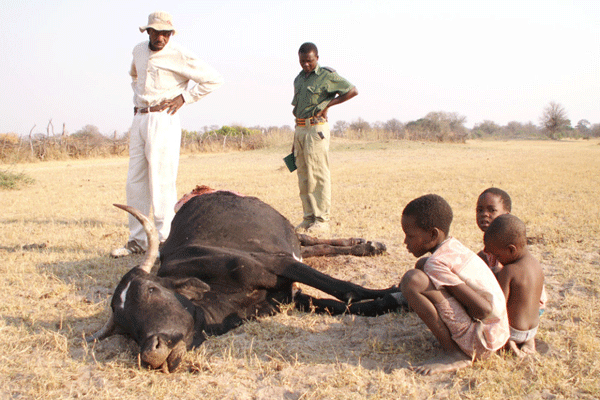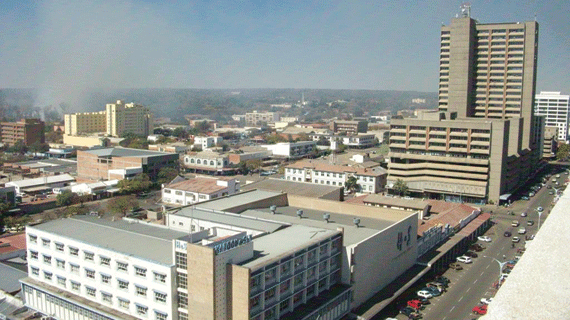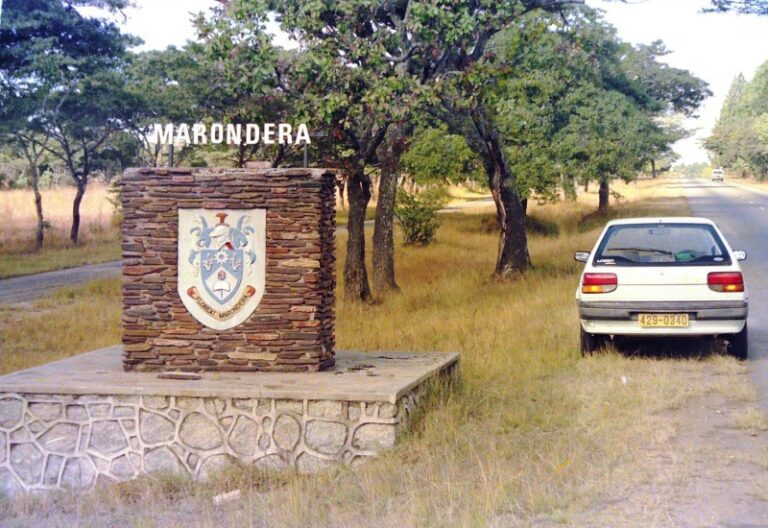
BY MTHANDAZO NYONI
DISEASE remains the major cause of cattle mortality in Zimbabwe, with three provinces — Midlands, Matabeleland North and South — having recorded 1 494 disease-related deaths this year, according to official statistics.
Last week, experts said this called for the government and farmers to put more efforts in protecting the national herd.
Last year, diseases accounted for 69% of the total deaths while drought-related issues accounted for 21%, resulting in a cattle herd mortality of 4,2%, according to the Agriculture ministry’s second round crop and livestock assessment report.
The report notes that tick-borne diseases continue to pose a serious threat to the national herd, currently standing at 5,5 million, a continuation of the problem that started in 2017 when the national dipping programme started to face serious challenges.
The highest number of cattle deaths have been attributed to Theileriosis (January disease) with Mashonaland East, West, Central and parts of Manicaland being the worst affected.
Other tick-borne diseases reported were Anaplasmosis (gall sickness), Babesiosis (red water) and heart water.
Last year in January, 2 772 cattle succumbed to tick-borne diseases, while in November 2019 and November 2020, a total of 1 133 and 1 903 cattle died, respectively.
- Chamisa under fire over US$120K donation
- Mavhunga puts DeMbare into Chibuku quarterfinals
- Pension funds bet on Cabora Bassa oilfields
- Councils defy govt fire tender directive
Keep Reading
Matabeleland North provincial veterinary officer Polex Moyo said this year heat-water has claimed 112 animals, followed by lumpy skin with 107 reported deaths, gall sickness 15, and blackleg at 10 deaths.
The figures could be high as farmers are not reporting cattle death cases, Moyo said.
He also said farmers have started losing their animals, mostly cattle to a poisonous plant known as umkhawuzane in isiNdebele and diachapetalum cymousm in Latin.
He said there was a need farmers to take precautionary measures to avert deaths.
“Matabeleland North is perennially an umkhawuzane area, so we have started registering some deaths due to umkhawuzane,” Moyo told The Standard.
Umkhawuzane is mostly confined to the Kalahari sands of Matabeleland North and South provinces and parts of Mwenezi District in Masvingo.
In Matabeleland it has killed a substantial number of cattle mostly in Tsholotsho, Umguza and Nkayi districts.
The plant has green leaves and it is usually the first to appear in early spring, attracting animals.
It is small with a very extensive root system of up to 20 metres deep.
There is no treatment for animals that ingest the plant.
“Umkhawuzane has killed a number of cattle, especially during the month of August to November,” Moyo said.
“Farmers must try and avoid grazing areas where there is umkhawuzane.
“So far we have recorded a few cases from Nyamandlovu but it’s one of the conditions that really affect animals like cattle and goats.
“Of great interest in Matabeleland North province, which people do not really pay attention to but it’s causing losses in livestock, is predation.
“This issue is called human-wildlife conflict, which has been exacerbated by the resettlement of people going into the parks and the animals coming out of the parks.”
Moyo said last year lions killed 300 herd of cattle in Binga, Lupane, Tsholotsho, part of Umguza and Bubi, while hyenas killed 700, crocodiles killed 900, leopards killed 50 and jackals 84.
This year crocodiles have killed about eight herd of cattle, while jackals have killed 30 goats, he said.
“Predation and human-wildlife conflict is quite an issue and farmers are not paying attention to it,” Moyo added.
Midlands provincial veterinary officer Martin Sibanda said since the beginning of the year, the province has recorded about 340 cattle deaths and out of that figure, 270 were from tick-borne diseases, with the January disease claiming a total of 200.
The other three diseases — gall sickness, red water and heart water — shared the 70.
Lumpy skin claimed 40.
“Lumpy skin disease is being reported from every district on a weekly basis,” Sibanda said.
“Numbers are low, but the significance is that as we approach the rainy season when the flies that transmit the disease increase the numbers will multiply extensively.
“Unless farmers take heed and seek for the vaccines right now, we are poised to have a major outbreak.
“For now it’s hot and we are coming from the winter season but we are still getting cases.”
He added: “But there are minimal cases with each district reporting four or five, but usually the animals that recover remain as carriers and when the environment is ripe they start transmitting to the rest of the animals.
“It’s a very slow spreading disease, but it definitely spreads.
“The process of treatment is quite long and you can actually treat one animal for almost a full month and then the cost becomes massive.”
Lumpy skin disease is mostly prevalent during the rainy season as it is transmitted by biting flies.
The 2020/2021 rainy season experienced a major spike in lumpy skin disease cases, according to the round crop and livestock assessment report, and this can be attributed to the abundance of the vectors due to the good rains.
The average case fatality rate of the disease in the last five years is 5,6%.
Although the disease has a low case fatality rate, it affects livestock productivity.
Sibanda said the second challenge that they were facing as a province is January disease.
He said the Midlands province was the most affected.
“Our main problem areas are Mvuma, Shurugwi and Mberengwa,” Sibanda said.
“Mvuma had high mortalities when it started, but we managed to contain it.
“The challenge is that in some areas there is lack of water, but Mvuma is not a dry district because even now Mvuma is dipping and between 70% to 80% of their dip-tanks are actually effective unlike other districts.
“We have enough dipping chemicals and the cases that we get on average are two to four a week because it’s more than three months since we introduced intensive dipping.
“The other challenge that we face sometimes is that some farmers do not want to contribute towards dipping chemical procurement.”
Sibanda said farmers were supposed to pay a dipping levy, but because some do not want to pay the levy they don’t bring their cattle for dipping, preferring to spray them at home.
“Spraying is not effective, especially if you are dealing with an outbreak situation,” he said.
“We strongly recommend plunge dipping where it’s possible.
“I need to highlight that tick-borne diseases whether you call it January disease or heart-water, because of their nature, you cannot get zero cases once they are reported in an area.”
He added: “This is because ticks don’t only survive on cattle.
“Dipping chemicals that are being used these days have minimal residual effect.
“You can dip your cattle today, but after about two days they can start picking ticks again.
“So the cases can never get to zero. The other challenge is the foot-and-mouth disease (FMD).”
Sibanda said they had an outbreak of FMD two months ago in the Somabhula area, but they have since contained the situation.
“Fortunately, we had vaccines which we had kept for routine vaccination,” he said.
“So we were able to immediately vaccinate the affected farms and we were able to vaccinate the surrounding area.
“Since then we are not getting any new cases. So as far as we are concerned, the outbreak is totally under control.
“All this time Gweru district has been under quarantine and there were no cattle sales taking place, but we have since opened up cattle sales again.
“So for the rest of the districts they will be having normal cattle sales for production.
“Then in vaccinated areas the sales will be for direct slaughter.
“As far as we are concerned, the disease is under control for now.”
Matabeleland South provincial veterinary officer Enat Mdlongwa said they recorded over 2 300 cases of lumpy skin and 80 of these animals succumbed to the disease.
Black leg killed 830 animals.
“We have put in a lot of work to control foot-and-mouth disease and we last recorded cases of FMD in 2018, largely because of the fence we have erected at Gonarezhou,” he said.
“We hardly see any buffalos roaming around our area.”
Mdlongwa encouraged farmers to vaccinate their animals against lumpy skin by June and July of every year.
As part of measures to reduce disease-related deaths, the government launched a tick grease programme last year, targeting to benefit one million households.
Livestock condition
The condition of cattle is generally fair to good in most districts except in some parts of Gokwe due to inadequate rains, according to the second round crop assessment report.
Available grazing, the report says, is expected to last up to the next season in most districts.
However, in the northern parts of the country specifically parts of Gokwe North, Zambezi valley, Nkayi and Gwanda are likely to have grazing challenges.
“Generally, communal areas will have shortage of grazing due to over-stocking and generally poor quality of grazing areas.
“The poor quality is due to invaders species, bush encroachment, veld degradation and poor grass regrowth (zero reseeding),” the report reads in part.
Water for livestock is also available in most districts.
However, there are some districts that are likely to experience water challenges after three months as livestock will begin to move long distances to perennial water sources such as dams, boreholes and perennial rivers.
Most of the rivers and water bodies are heavily silted across all provinces.
Matabeleland North provincial livestock officer Admore Chikohwa said there was a need for farmers to be pro-active by harvesting hay and growing fodder such as legumes and grass.
“In terms of water, we need boreholes. If it’s possible, every village must have a borehole,” he said.
“Wherever there are dams to be built, let them be built.”
He challenged farmers to reclaim dongas to prevent erosion in pasture lands and also to rehabilitate dams so as to harvest more water.
Farmers can also rotate pastures and also destock where necessary.
Matabeleland South provincial livestock specialist Hatitye Muchemwa said the challenge they were having as a province is the outbreak of veld fires in the grazing areas.
“I can’t quantify in terms of the actual area that has been destroyed but it’s worrying. We are trying to do hay baling and we have already started in Shangani and Matopo.
“So we hope that we will harvest as much as possible,” he said.
“The water situation is good. Livestock are getting water from boreholes and some dams. The livestock condition is varying from fair to good, fair in communal areas and good in the A1 and A2 farms.
“We are not expecting any drought-related deaths this year.”
Farmers were also encouraged to establish their pastures with different grass species including Katambora and star grass.
Zimbabwe’s beef cattle numbers increased from 5,4 million cattle in 2019 to 5,5 million last year due to reduction in disease related deaths (especially Tickborne diseases) and poverty deaths, improved breeding methods, improved pastures and feed due to early rains.
Government expects beef output to increase to 68 387 tonnes in 2021, up from 61 600 tonnes produced in 2020.










